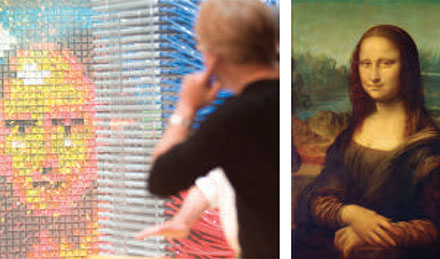SECTION: Features
In this article, I write about the journey of translating academic research into creative inquiry to produce "For Black Femmes," a four-minute animated documentary. This project stemmed from a desire to explore online experiences faced by Black women and femmes, often overlooked by technology companies and researchers. Through storytelling and animation, I aimed to shed light on complex issues such as online harassment and cultural betrayal trauma theory, bridging the gap between academia and broader audiences.
By Tyler Musgrave, June 2024
PDF | HTML | In the Digital Library
Boston Dynamics, famous for their robot quadruped dog "Spot," takes new inspiration from some "not-so-new" sources.
By Leland Hepler, David Robert, October 2023
PDF | HTML | In the Digital Library

SECTION: Features
Making the design and production of animated, mechanical characters accessible to the public.
By Stelian Coros, April 2016
PDF | HTML | In the Digital Library

SECTION: Features
For animated film "Brave," Pixar Animation Studios adopted a procedural workflow for special effects. This new paradigm changed how Pixar approached effects. It allowed them to iterate, experiment, and layer physics alongside artist-directed elements. The effects artists used proceduralism to create a Scottish river for the main characters to enjoy some mother/daughter time.
By Michael O'Brien, June 2013
PDF | HTML | In the Digital Library

Kodu Game Lab is a complete, 3-D game development environment designed to be accessible to children as young as 9 years old. The core of Kodu is a custom visual programming language, which blends ease of use with expressibility.
By Stephen Coy, June 2013
PDF | HTML | In the Digital Library
This article describes a technique to visualize query results, representing purchase orders placed on Amazon.com, along a traditional 2-D scatter plot and a space-filling spiral. We integrate 3-D objects that vary their spatial placement, color, and texture properties into a visualization algorithm. This algorithm represents important aspects of a purchase order based on experimental results from human vision, computer graphics, and psychology. The resulting visual abstractions are used by viewers to rapidly and effectively explore and analyze the underlying purchase orders data.
By Amit Prakash Sawant, Christopher G. Healey, Dongfeng Chen, Rada Chirkova, March 2009
PDF | HTML | In the Digital Library
This project visualizes a scientific dataset containing two-dimensional flow data from a simulated supernova collapse provided by astrophysics researchers. We started our project by designing visualizations using multiple hand drawings representing the flow data without taking into consideration the implementation constraints of our designs. We implemented a few of our hand drawn designs. We used an assortment of simple geometric graphical objects, called glyphs, such as, dots, lines, arrows, and triangles to represent the flow at each sample point. We also incorporated transparency in our visualizations. We identified two important goals for our project: (1) design different types of graphical glyphs to support flexibility in their placement and in their ability to represent multidimensional data elements, and (2) build an effective visualization technique that uses glyphs to represent the two-dimensional flow field.
By Amit Prakash Sawant, Christopher G. Healey, December 2007
PDF | HTML | In the Digital Library
Fans of PC role-playing games need no introduction to Bioware-the Edmonton, Alberta based developer of Baldur's Gate, Neverwinter Nights, and Jade Empire, among others. The company recently opened a studio in Austin, Texas to develop a massively multiplayer online role-playing game (MMORPG, or simply MMO) for an unannounced intellectual property. Ben Earhart, client technology lead on the new project, took a few hours out of his busy schedule to discuss with Crossroads the future of real-time rendering-3-D graphics that render fast enough to respond to user input, such as those required for video games.
By James Stewart, December 2007
PDF | HTML | In the Digital Library
The increasing demands of 3D game realism - in terms of both scene complexity and speed of animation - are placing excessive strain on the current low-level, computationally expensive graphics drawing operations. Despite these routines being highly optimized, specialized, and often being implemented in assembly language or even in hardware, the ever-increasing number of drawing requests for a single frame of animation causes even these systems to become overloaded, degrading the overall performance. To offset these demands and dramatically reduce the load on the graphics subsystem, we present a system that quickly and efficiently finds a large portion of the game world that is not visible to the viewer for each frame of animation, and simply prevents it from being sent to the graphics system. We build this searching mechanism for unseen parts from common and easily implemented graphics algorithms.
By Kenneth E. Hoff, May 1997
PDF | HTML | In the Digital Library







